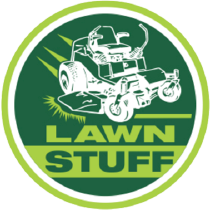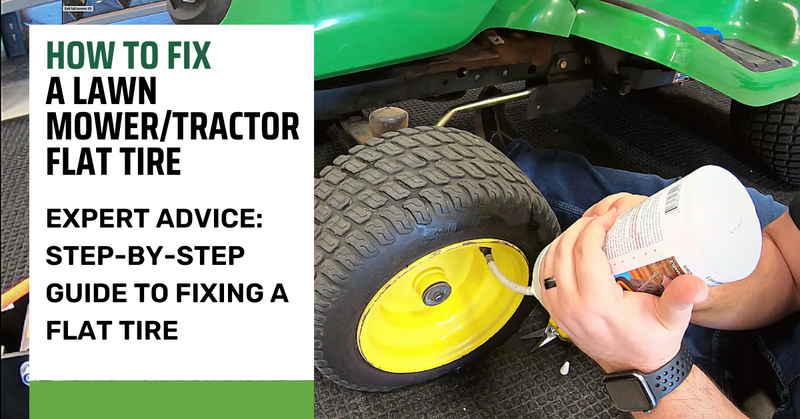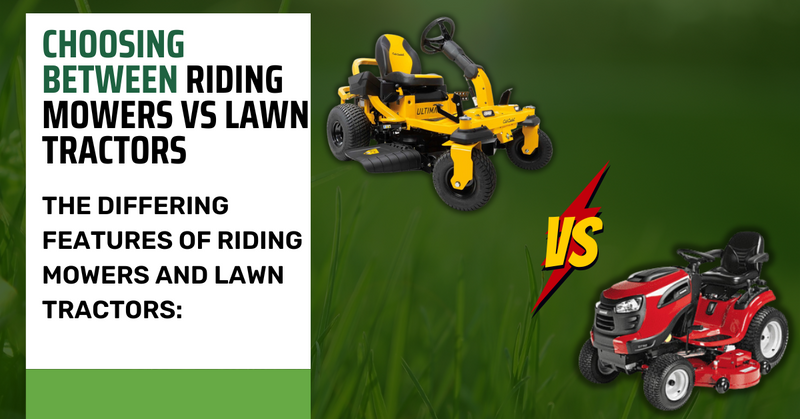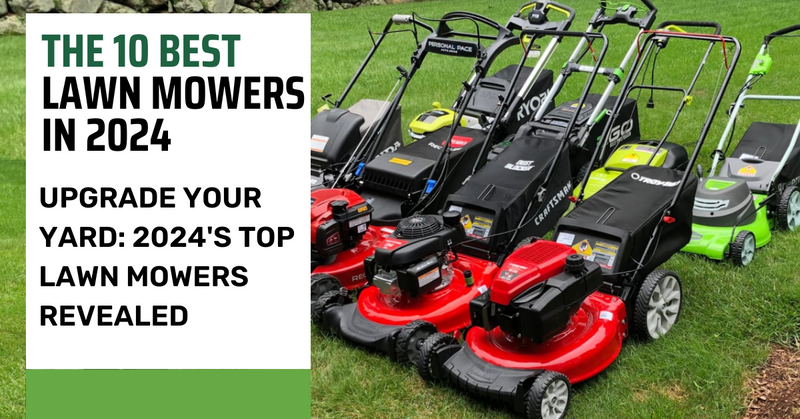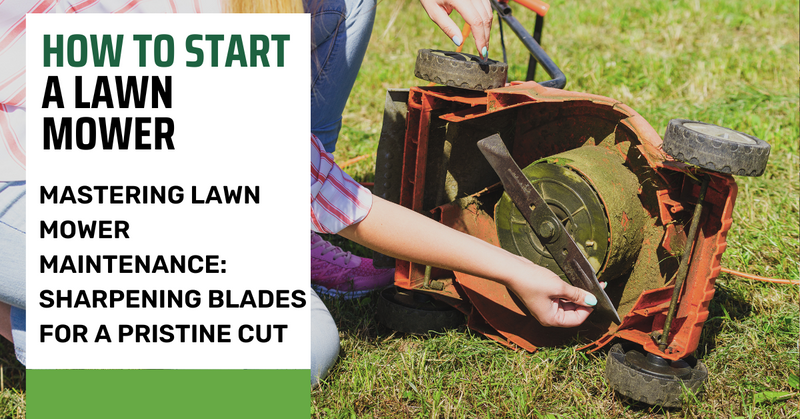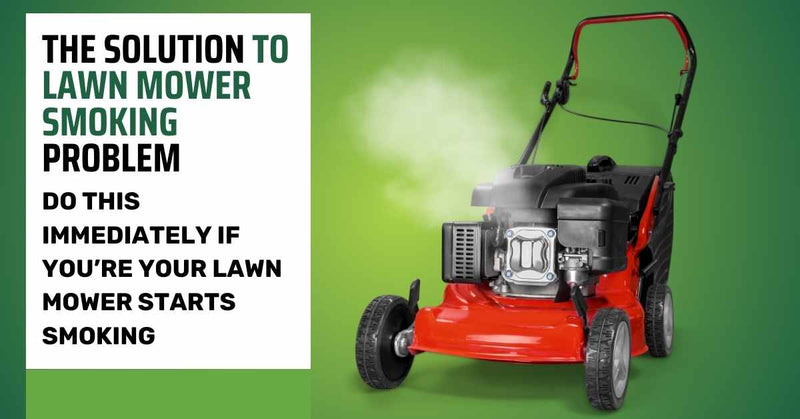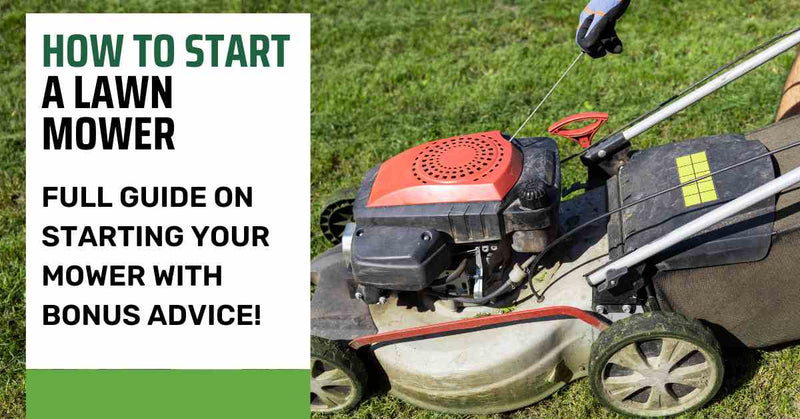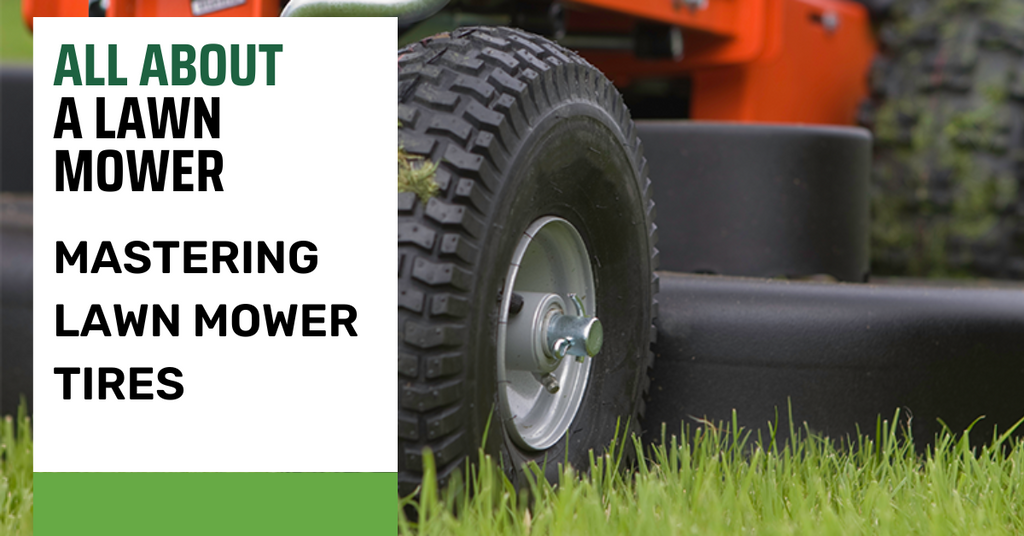

Mastering Your Lawn Mower Tires: A Comprehensive Guide
Maintaining a lush, manicured lawn requires more than just a reliable lawn mower. The often-overlooked hero of lawn care is the humble tire that supports your mower's every move. Understanding the different types of lawn mower tires and how to care for them can significantly impact your lawn's health and the efficiency of your mowing efforts. In this comprehensive guide, we'll delve into everything you need to know to become a tire expert.
Exploring Types of Lawn Mower Tires
-
Pneumatic Tires: Pneumatic tires, filled with air, offer a smooth ride and excellent traction. They're ideal for flat and even terrains, providing maneuverability and ease of use. However, they require occasional maintenance to check and adjust tire pressure.
-
Solid Rubber Tires: Solid rubber tires eliminate the hassle of tire maintenance, as they're puncture-proof and never require inflation. They excel in rough terrain and are perfect for heavy-duty mowing tasks. However, their rigid design may result in a slightly bumpier ride.
-
Turf Tires: Designed to minimize lawn damage, turf tires feature a wide surface area and shallow tread pattern. They're perfect for maintaining delicate grass and are commonly used on golf courses and residential lawns. Turf tires prioritize lawn health without sacrificing traction.
-
Knobby Tires: Knobby tires boast deep treads and rugged designs, providing maximum traction on challenging terrains. They're perfect for tackling steep slopes, muddy patches, and uneven surfaces. Knobby tires ensure your mower stays firmly planted, even in the most demanding conditions.
Key Considerations When Selecting Lawn Mower Tires
-
Lawn Type Analysis: Evaluate your lawn's characteristics to determine the most suitable tire type. Flat lawns may benefit from pneumatic or solid rubber tires, while hilly terrains require the stability offered by knobby tires.
-
Size and Tread Pattern Selection: Choose tire sizes and tread patterns that match your lawn's needs. Opt for wider tires with shallow treads for delicate grass and narrower tires with deep treads for challenging terrain.
-
Durability Evaluation: Consider factors such as tire material and construction to ensure longevity. Perform regular inspections to identify signs of wear and tear, and replace tires as needed to maintain optimal performance.
-
Maintenance Protocols: Implement a regular maintenance schedule, including tire pressure checks and tread wear assessments. Clean tires after each use to remove debris and prevent buildup that could affect performance.
Pro Tips for Tire Care
-
Maintain proper tire inflation to ensure optimal performance and longevity.
-
Clean tires thoroughly after each mowing session to remove grass clippings and debris.
-
Store your mower in a dry, sheltered location to prevent tire damage from exposure to the elements.
1) Are All Lawn Mower Tires the Same?
Before diving into the nuances, it's essential to understand the basics. Lawn mower tires come in different sizes, materials, treads, and constructions. These variations significantly impact the performance, durability, and suitability for specific terrain and tasks.
Size Matters
One of the most apparent differences among lawn mower tires is size. Just like vehicles, lawn mowers come in various sizes, and so do their tires. The size of the tire affects the mower's ground clearance, stability, and maneuverability. Choosing the right size ensures optimal performance and prevents damage to both the mower and the lawn.
Just like car tires, lawn mower tires have specific sizing. You'll often see something like "15x6.00-6" on the sidewall. This translates to:
-
15: Tire diameter in inches
-
6.00: Tire width in inches
-
6: Wheel rim diameter in inches
Getting the correct size is crucial for proper fit and mower performance. Check your owner's manual or the existing tire for the right measurements.
Tread Talk
The tread pattern on your mower tire affects traction, maneuverability, and how gentle it is on your lawn. Common tread types include:-
Turf Tires: Shallow, tightly spaced treads designed to minimize lawn damage, ideal for flat, well-kept lawns.
-
Lug Tires: Aggressive treads with deep lugs for enhanced traction in mud, slopes, or uneven terrain.
-
Ribbed Tires: Simple, straight-line treads mainly found on front mower wheels, providing good steering.
Construction: Tubeless vs. Tube
-
Tubeless: Like modern car tires, these hold air directly without an inner tube. They are more resistant to punctures and easier to repair.
-
Tube-Type: These require a separate inner tube to hold air. While less common today, they may be found on older mowers.
Additional Factors
- Ply-rating: Indicates the tire's strength and load-carrying capacity. A higher ply generally means a stronger tire.
- Flat-Free Tires: Solid rubber tires that are immune to punctures but offer a less comfortable ride.
Tread Patterns
Tread patterns play a crucial role in traction and maneuverability. Different tread designs are suitable for different terrains and mowing conditions. For instance, a deep, aggressive tread is ideal for rough and uneven terrain, providing better traction and stability. Conversely, a smooth tread is more suitable for flat, well-maintained lawns, offering minimal soil disruption.
Material and Construction
Lawn mower tires are typically made from rubber compounds, but the quality and composition can vary. Higher-quality tires are more resistant to punctures, wear, and weathering, thus lasting longer and requiring less frequent replacement. Additionally, the construction of the tire, such as bias-ply or radial, affects its durability and performance.
Specialty Tires
Beyond the basic variations, there are specialty tires designed for specific purposes. For example, zero-turn mowers often use flat-free tires made from solid rubber or semi-pneumatic materials to eliminate the risk of punctures and the hassle of inflating tires. Similarly, snow tires equipped with chains provide better traction on slippery surfaces during winter.
2) How Do I Know What Size Lawn Mower Tire I Need?
When it's time to replace the tires on your lawn mower, ensuring you get the right size is essential for optimal performance and safety. But with various sizes and specifications available, how do you know which size lawn mower tire you need? Let's explore some simple steps to guide you through the process.
1. Check the Current Tire Size
The easiest way to determine the size of your lawn mower tires is to check the sidewall of the current tires. Look for a series of numbers that indicate the tire size. Typically, you'll see a combination such as "15x6.00-6" or "20x8.00-8". These numbers represent the tire's diameter, width, and rim size respectively.
2. Measure the Diameter and Width
If the tire size isn't clearly labeled or if the tires are missing, you can measure the diameter and width of the wheel. Use a tape measure to determine the diameter of the wheel from one edge of the tire to the other across the center. Then, measure the width of the tire from sidewall to sidewall.
3. Determine the Rim Size
The rim size is crucial for ensuring the tire fits properly on the wheel. It's usually expressed as the diameter of the rim in inches. Measure the diameter of the rim from one edge to the other, excluding the tire itself.
4. Consider Tread Type and Ply Rating
While determining the size, consider the type of tread pattern and the ply rating you need. The tread pattern should match your mowing conditions, whether you're mowing on flat terrain or rough, uneven ground. Additionally, the ply rating indicates the tire's strength and durability, with higher ply ratings offering better resistance to punctures and wear.
5. Consult the Mower Manual or Manufacturer
If you're unsure about the tire size or specifications, refer to the lawn mower's manual or contact the manufacturer. They can provide specific recommendations based on the make and model of your mower, ensuring you get the right size and type of tires.
6. Seek Professional Assistance
If you're still uncertain or prefer expert guidance, visit a local lawn mower dealer or repair shop. They can help you identify the correct tire size and may even offer installation services.
3) Why Do Riding Lawn Mower Tires Go Flat?
Flat tires can be a common issue with riding lawn mowers, but understanding the reasons behind them can help you prevent and address this problem effectively:
In summary, mastering your lawn mower tires involves understanding their various types, sizes, maintenance requirements, and common issues. By familiarizing yourself with these aspects, you can ensure your mower operates at peak performance, resulting in a healthier, more beautiful lawn.
Take charge of your lawn care journey today by delving into the world of lawn mower tires. Your lawn will thank you for it!
-
Punctures: Sharp objects such as nails, screws, thorns, or rocks can puncture the tire, causing it to lose air. These punctures can occur while mowing over debris or while the mower is parked in an area with sharp objects.
-
Wear and Tear: Over time, the tread on the tire wears down, making it more susceptible to punctures. Additionally, the rubber can degrade due to exposure to sunlight, heat, and chemicals, increasing the likelihood of leaks.
-
Improper Inflation: If the tire is underinflated, it can become more susceptible to damage and punctures. Conversely, overinflated tires are also at risk of damage and may be more prone to blowouts.
-
Age: Like all rubber products, lawn mower tires deteriorate with age. As the tire ages, it becomes less flexible and more prone to cracking and leaking. Even if the tire appears to be in good condition, it may still lose air over time due to gradual deterioration.
-
Faulty Valve Stem: The valve stem is the part of the tire that allows air to be added or removed. If the valve stem is damaged or defective, it can result in air leaks and flat tires.
-
Rough Terrain: Mowing over rough or uneven terrain can put extra stress on the tires, increasing the likelihood of punctures or damage.
To prevent flat tires, it's essential to regularly inspect your riding lawn mower tires for signs of damage or wear, maintain proper tire pressure, avoid mowing over debris, and replace worn or damaged tires promptly. Additionally, using puncture-resistant tires or tire sealants can help reduce the risk of flats in some situations.
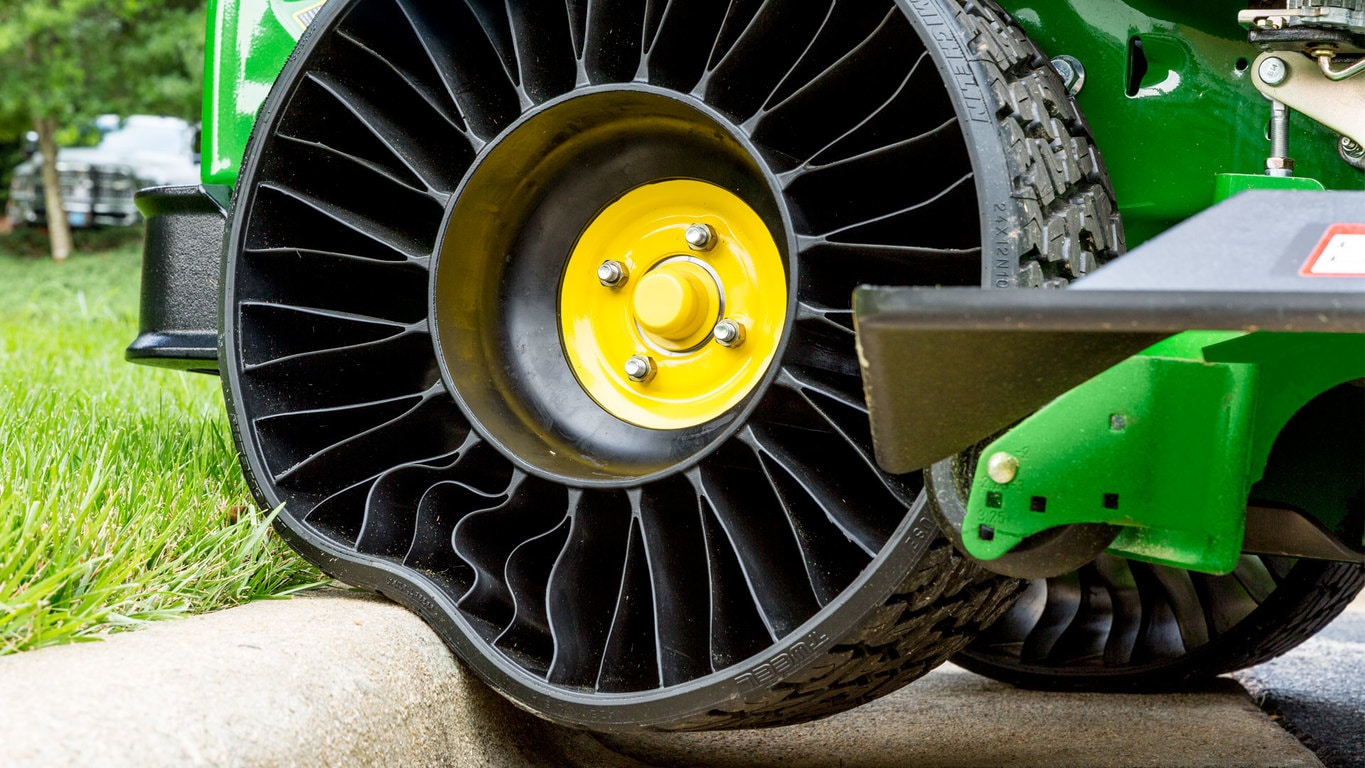
Conclusion:
Lawn mower tires may not be the most glamorous aspect of gardening equipment, but they're vital for efficient and safe operation. By familiarizing yourself with the different types of tires, sizing guidelines, and maintenance tips, you can ensure optimal performance and extend the lifespan of your mower. Whether you're a seasoned landscaper or a novice gardener, investing in the right tires and proper care will pay dividends in the long run.
